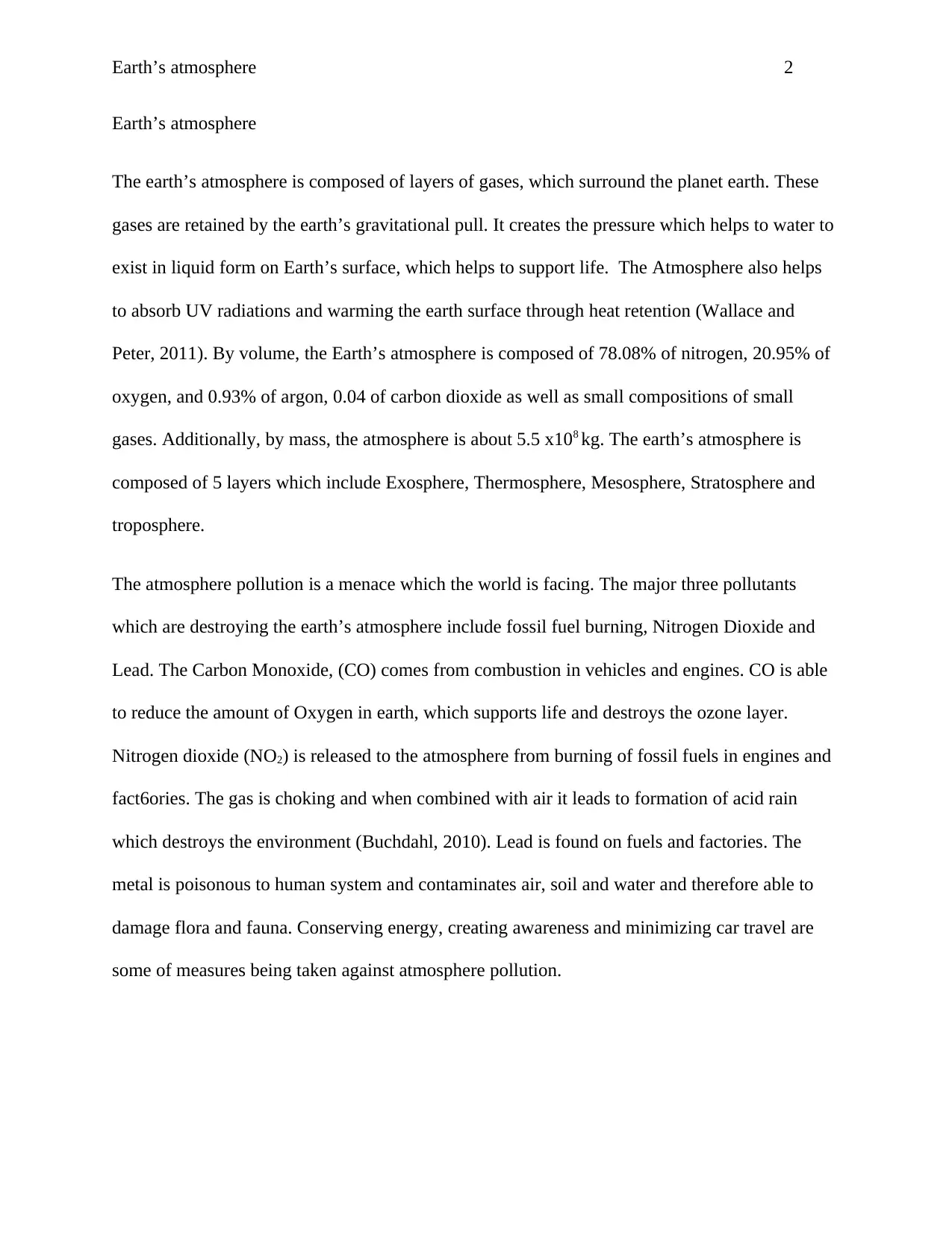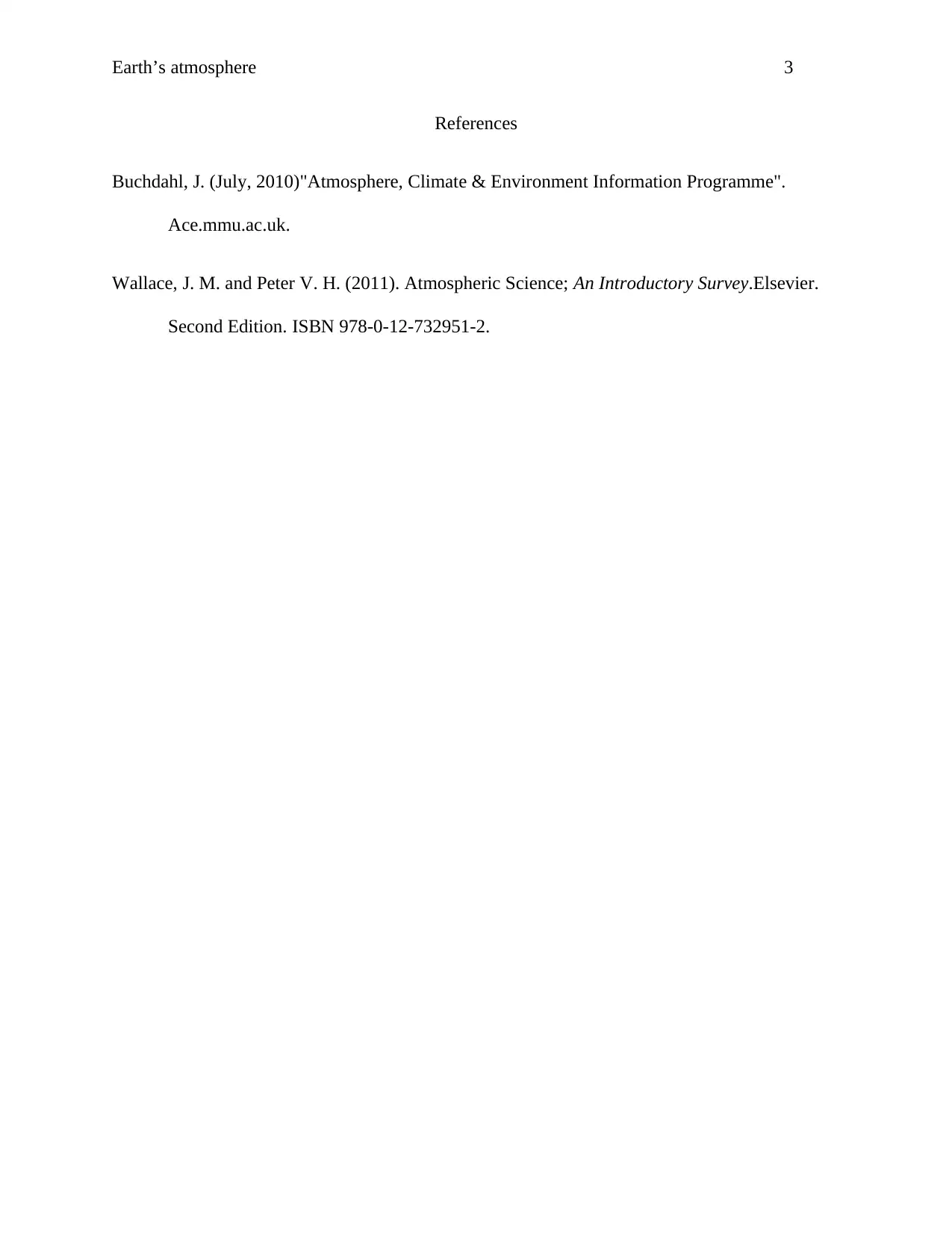Environmental Science: Earth's Atmosphere, Pollution and Conservation
VerifiedAdded on 2021/04/17
|3
|386
|31
Report
AI Summary
This report provides an overview of the Earth's atmosphere, detailing its composition including nitrogen, oxygen, argon, and carbon dioxide. It explores the significant issue of atmospheric pollution, focusing on key pollutants such as carbon monoxide, nitrogen dioxide, and lead, which originate from sources like fossil fuel burning. The report outlines the detrimental effects of these pollutants on both the environment and human health, including ozone layer depletion and acid rain. It also emphasizes the importance of conservation strategies, such as energy conservation, raising public awareness, and reducing car travel, as essential measures to combat atmospheric pollution and promote environmental sustainability. References to relevant scientific literature are included to support the findings.
1 out of 3










![[object Object]](/_next/static/media/star-bottom.7253800d.svg)